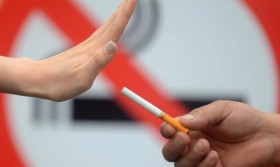Title: The Unseen Link: How Smoking Exacerbates Pityriasis Alba and Compromises Skin Health
Introduction
Pityriasis Alba (PA) is a common, benign dermatosis primarily affecting children and adolescents, characterized by hypopigmented, fine-scaly patches, often on the face, neck, and arms. While its exact etiology remains elusive, it is frequently associated with atopic dermatitis and dry skin. Traditionally considered a self-limiting condition, its management focuses on moisturization and mild anti-inflammatory creams. However, a growing body of evidence suggests that environmental and lifestyle factors can significantly influence its course and severity. Among these factors, smoking emerges as a potent and under-recognized aggravator. This article delves into the multifaceted pathophysiological mechanisms through which cigarette smoke, both active and passive, contributes to the expansion and persistence of Pityriasis Alba lesions, transforming a mild condition into a more stubborn dermatological concern.
Understanding Pityriasis Alba: A Brief Overview

Before exploring the role of smoking, it is crucial to understand PA's baseline pathology. It is not a fungal infection nor a classic eczematous process but is often linked to a state of subclinical inflammation. Key features include:
- Disrupted Skin Barrier: Similar to atopic skin, PA lesions often show impaired barrier function, leading to transepidermal water loss (TEWL) and dryness.
- Mild Inflammation: A low-grade dermal inflammatory infiltrate is often present, though not as pronounced as in eczema.
- Post-inflammatory Hypopigmentation: The slight inflammation disrupts the transfer of melanin from melanocytes to keratinocytes, resulting in the characteristic pale patches. This hypopigmentation becomes more noticeable after sun exposure, as the surrounding skin tans.
The condition's vulnerability lies in this delicate balance of a compromised barrier and subtle inflammation, making it highly susceptible to external aggressors.
The Chemical Onslaught: Tobacco Smoke and Skin Penetration
Cigarette smoke is a toxic cocktail of over 7,000 chemicals, including nicotine, carbon monoxide, tar, and numerous free radicals and reactive oxygen species (ROS). When smoked, these compounds are inhaled into the lungs and enter the bloodstream, reaching the skin's microvasculature systemically. Furthermore, for the smoker and those exposed to secondhand smoke, these toxins can directly deposit on and penetrate the skin's surface.
This dual assault—systemic via blood and local via direct contact—initiates a cascade of detrimental effects on skin already weakened by PA.
1. Exacerbation of Oxidative Stress and Inflammation
The most direct link between smoking and PA lesion expansion is the profound induction of oxidative stress.
- Free Radical Production: The plethora of ROS in smoke overwhelms the skin's natural antioxidant defenses (like vitamins C and E, glutathione). In PA skin, which is already in a subtly inflamed state, this oxidative burden is particularly damaging.
- Activation of Inflammatory Pathways: ROS act as potent signaling molecules that activate key transcription factors, most notably Nuclear Factor-kappa B (NF-κB). This activation triggers the production of pro-inflammatory cytokines such as Tumor Necrosis Factor-alpha (TNF-α), Interleukin-1 (IL-1), and IL-6. This amplifies the existing low-grade inflammation in PA lesions, pushing them from a subclinical to a more clinically apparent state. The increased inflammation further disrupts melanocyte function, worsening hypopigmentation and potentially enlarging the affected area.
2. Further Impairment of the Skin Barrier
A compromised barrier is a hallmark of PA. Smoking directly and indirectly worsens this defect.
- Direct Damage: Tar and other particulate matter in smoke can physically clog pores and disrupt the stratum corneum, the skin's outermost protective layer.
- Reduction of Skin Blood Flow: Nicotine is a potent vasoconstrictor. It causes narrowing of the small blood vessels that supply the dermis and epidermis. This reduced cutaneous microcirculation starves the skin of oxygen and essential nutrients (like vitamin A) while impairing the removal of metabolic waste. The result is skin that is less able to repair itself, drier, and more fragile. For a PA lesion, this means a significantly delayed healing process and increased susceptibility to irritation, which can cause the lesion to spread or new ones to form.
3. Alteration of Skin Microbiome and Immune Response
Emerging research highlights the role of the skin microbiome in maintaining health. Disruption of this delicate ecosystem is linked to conditions like atopic dermatitis and, by extension, PA.
- Microbiome Shift: Components of cigarette smoke can alter the composition of the skin's microbial community, potentially reducing beneficial flora and allowing for the overgrowth of more harmful bacteria.
- Immune Dysregulation: The systemic inflammatory state induced by smoking can skew the skin's immune response. It can heighten sensitivity to minor irritants or even to the skin's own flora, leading to a perpetuated inflammatory cycle that prevents the resolution of PA lesions.
4. Delayed Healing and Hyperpigmentation Risks
The vasoconstrictive and pro-inflammatory effects of smoking are well-documented to delay wound healing. While PA is not an open wound, the compromised skin barrier represents a form of chronic, low-level injury. Smoking impedes its recovery. Furthermore, the chronic inflammation can sometimes lead to a confusing outcome: while the primary issue is hypopigmentation, the ongoing irritation can, in some skin types, trigger post-inflammatory hyperpigmentation around the edges of the lesions, creating a more complex and noticeable appearance.
Clinical Implications and Conclusion
The evidence strongly suggests that smoking is not a passive bystander but an active contributor to the exacerbation of Pityriasis Alba. For dermatologists and physicians, this insight has critical practical implications:
- Patient History: Questioning adolescent patients with persistent or widespread PA about their own smoking habits or exposure to secondhand smoke at home should become a standard part of the clinical assessment.
- Holistic Management: Treatment plans must extend beyond topical steroids and emollients. Smoking cessation counseling, both for the patient and for family members in the household, should be integrated as a fundamental component of managing stubborn cases. Eliminating this potent trigger can be more effective than escalating pharmaceutical interventions.
- Public Health Message: This link adds another compelling reason to the already extensive list of reasons to avoid tobacco, highlighting its detrimental impact on a common childhood skin condition.
In conclusion, Pityriasis Alba, often dismissed as a trivial cosmetic issue, can be significantly amplified by the toxic influence of cigarette smoke. Through mechanisms of intensified oxidative stress, rampant inflammation, barrier degradation, and impaired healing, smoking fuels the expansion and persistence of these hypopigmented patches. Recognizing this connection is vital for effective treatment and underscores the profound, far-reaching consequences of tobacco use on human health, reaching even the surface of our skin.
Tags: #PityriasisAlba #SmokingAndSkin #Dermatology #SkinHealth #OxidativeStress #TobaccoCessation #InflammatorySkinDisease #Hypopigmentation #PublicHealth #SecondhandSmoke












